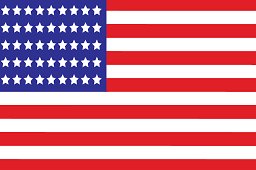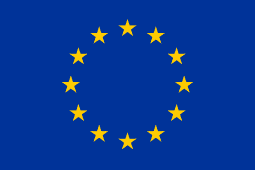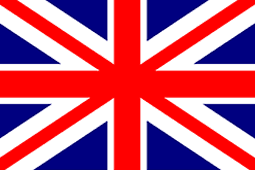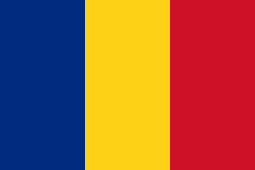News
Everything You Need to Know About the Cotton T-Shirt
READ TIME: 4 MINUTES 25 SECONDS
Whether buying a birthday gift or starting your own t-shirt business, knowing your options when it comes to t-shirts is an important part of making a decision. This blog post will familiarize you with all of the lingo and specifications you'll want to know when searching for that perfect cotton tee.

A t-shirt travels many miles and through many hands before it gets to your closet.
Most t-shirts begin on a farm. There, seeds wedged into the soil work hard to become plants that produce blooms. In a short time these flowers fall off and the remaining stems bear fruit, or “bolls”, which eventually dry and crack open to reveal the soft, fluffy interior that we know as cotton.

India is currently the world’s highest producing cotton cultivator, with China coming in second and the US ranking third in worldwide cotton production.
There are three different types of cotton: Upland, Egyptian, and Prima. Upland cotton accounts for 90% of all cotton produced worldwide and is almost certainly what comprises the t-shirts in your closet. The other two are specialty types reserved for luxury linens and apparel.
After cotton is cultivated from a farm it is put through several processing steps to remove impurities at various levels. These processing steps are what lend cotton fabrics the labels we see as consumers: Carded Open End or C.O.E, Ring Spun, and Combed Ring Spun.

-
Carded Open End or C.O.E: This describes cotton that has been sent through a carding machine and spun into yarn using an open-end spinning process. A carding machine rolls cleaned and detangled bunches of cotton through large metal teeth that straighten and align the fibers. The open-end spinning process picks these fibers up from a coil and spins the fibers back and forth around a spool. Its threshold for removing short fibers is the lowest of the processes, meaning that C.O.E cotton contains the highest variance of fiber lengths. The resulting fabric is somewhat rough, dense, and stiff. Your cheapest cotton quality that comprises t-shirts for single use events.

-
Ring Spun: Ring spun cotton goes through the same carding process as C.O.E cotton but utilizes a different spinning process. “Ring spun” is a yarn spinning technique that spins the cotton fibers “simultaneously and continuously”, as opposed to back and forth around a spool. This removes a greater quantity of short fibers. The resulting fabric is much smoother than that of carded open end cotton.

-
Combed Ring Spun: As the name implies, combed ring spun cotton is ring spun cotton introduced to the additional step of combing. Combing the fibers removes even more short strands and ensures the fibers are smooth and straight. The result is an ultra soft, silky, luxurious feeling cotton tee. The Mato & Hash MH200 T-Shirt in all variations is made of combed ring spun cotton.

Fabric Types
These grades of cotton are then sent to textile mills all over the world to be woven into fabric. Today most of these mills are located in West and South Asia, in countries like India, Bangladesh, and Pakistan. There are many different blends and styles that result depending on what additives and techniques are used. Let’s explore some of the most common fabrics used in t-shirts and their applications
100% Cotton
As you might guess, a 100% cotton fabric is made entirely out of cotton with no synthetic additives. It is the most expensive to produce as it requires the greatest amount of natural resources, like land and water. It is also typically more expensive to import and export naturally derived products.

Characteristics of 100% Cotton:
-
100% cotton fibers, no synthetic additives
-
Tend to be rougher than poly blend fabrics
-
Good for sensitive skin
-
Prone to shrinkage
-
Good print quality
Helpful tips: 100% Cotton is prone to shrinkage and degradation over time. Wash using cold water and air dry or machine dry using low heat.
+Polyester
If a fabric isn’t 100% cotton then usually polyester is incorporated into the makeup.
Polyester thread is made by extruding melted oil refining and manufacturing waste as well as recycled plastics through tiny holes. This thread is then spun into yarn which is woven with cotton or other synthetic materials to make fabric.
CVC:
CVC stands for Chief Value Cotton. This is a cotton and polyester blend fabric where cotton comprises at least 50% of the fabric makeup. The Mato & Hash t-shirt is a 60% cotton 40% polyester shirt, making it technically a CVC fabric.

Characteristics of CVC:
-
At least 50% cotton
-
Remaining percentage polyester
-
Super soft feel
-
Durable: Polyester fibers do not shrink or deform
-
Cost-efficient: reduced importing, exporting, and manufacturing costs
Helpful tips: The percentage of cotton is usually adjusted depending on the intended usage of the shirt. Higher cotton percentages fare better for printing purposes, although this depends on the desired effect of the print. At Mato & Hash we’ve perfected the printing process on any surface, even 100% polyester!
Tri-blend:
Triblend fabric is exactly as the name implies. It’s composed of three materials: cotton, polyester, and usually rayon. Rayon, originally created as a synthetic silk alternative, makes the fabric lighter and softer than CVC fabrics.

Characteristics of tri-blend:
-
Cotton, polyester, & rayon in varying percentages
-
Not prone to shrinkage or warping
-
Silky soft
-
Resembles athleisure feel
-
Heathered look
Helpful tips: Triblends typically have a blended, heathered effect to them due to how the various fibers retain dye. Because of this any print on a triblend shirt will also have a heathered, vintage effect.

Fits & Styles:
Every brand has their own guides for labelling t-shirt styles, but there are some general rules we can stick to for understanding common t-shirt fits.
Crew Neck

This is your most common style of tee. It includes a simple round opening at the top of the shirt, typically with a separate collar element sewn in that is ribbed or otherwise differently treated, and simple hemmed sleeves and bottom. It’s the perfect base for any band tee, fundraiser item, promotional piece, or whatever else you may need a t-shirt for.
V Neck

This label simply denotes that, instead of being a simple circle, the neck of the shirt dips down to a point in the center creating a “V”. V necks range in depth from small flattering points to dramatic, eye-catching plunges that show off the chest. If you’re looking for something sleek and stylish then a v neck could be your desired style.
Ringer

A ringer tee typically follows the same pattern as a crew neck but uses contrasting fabric to adorn the neck and sleeve openings. Ringer tees are popular for athletic designs or fashion purposes. They’ve become quite trendy in the past five years or so. If you’re looking for something basic with a unique modern edge perhaps a ringer tee is for you.
Athletic

An athletic fit is meant to show off the figure, so it is usually a bit tighter with smaller sleeve and waist openings. This isn't always the case, however. Athletic for some brands may mean a trim muscle tee while others use this label to describe a classic fitting sports t-shirt.
Be sure to check out model pictures before deciding what to purchase. If looking to purchase t-shirts for relabelling and selling, consider the tastes of your target audience when deciding how to describe your product.
Slim Fit

Slim fit means that the garment will fit close to the skin without being skin tight. It’s tapered to follow the shape of the body more naturally than an un-tapered boxy tee. Slim fit is generally regarded as the most flattering style. However, some may find it uncomfortable compared to the classic loose fitting t-shirt.
As always each brand handles their descriptions differently so be sure to get a range of views of the garment and of consumer opinions before deciding.
Side Seamed VS Tubular

There are two main methods for constructing the body of a t-shirt. Shirts are either side seamed, meaning that a front and back piece are sewn together at the sides, or tubular, meaning that the shirt is cut from a tube of fabric that the sleeves and collar are then applied to.
A side seamed shirt gives a greater range of style possibilities. They may be tapered, curved, flared, etc. A tubular shirt offers only a single fit style that tends to be loose and boxy. Tubular shirts require less cutting and sewing and so are more budget friendly, while side-seamed shirts offer a more flattering fit.

Other Lingo:
32/40/45 etc “Singles”:
This label relates to the density of threads that comprise the yarn used in the fabric. Think of it like thread count: A higher number means a denser, smoother fabric. This is because the yarn is made up of a higher quantity of finer threads.
WRAP:
Sometimes garments may be marked as being produced in a “WRAP certified” factory. WRAP stands for “Worldwide Responsible Accredited Production”. From their website- “WRAP is an independent, objective, non-profit team of global social compliance experts dedicated to promoting safe, lawful, humane, and ethical manufacturing around the world through certification and education.” If you’re looking to steer your purchase in an ethical direction, then making sure your garments come from a WRAP certified factory will give you some peace of mind about the working conditions said garment was manufactured in.
PFD/PFGD:
This stands for “Prepped For Dyeing” or “Prepped For Garment Dyeing”. This means that the garment has been bleached (but not brightened for retail, think a “natural” finish) but not softened or had any other treatments applied. These garments are usually meant for a manufacturer specializing in dyes or consumers experimenting with their own dyeing techniques.
Fabric Laundered:
This means that the garment or fabric has gone through a laundering process before retail. This is done so that consumers don’t see the drastic difference in characteristics before and after washing. Most mass produced fabrics have treatments applied to expedite the production process. Washing them away before they reach the consumer is standard practice.
All Set!
You're now equipped with the knowledge you need to choose your next t-shirt. Of course, this isn't everything there is to know about the cotton t-shirt, but it should be more than enough to give you a start on finding your newest wardrobe staple.
We have our favorite of course; the Mato & Hash MH200 t-shirt. The MH200 is a side seamed, slim fit, 60/40 cotton/polyester blend made of combed ring spun cotton. It makes an excellent printing surface for our many awesome designs and is ultra comfy. Give it a try and see if the Mato & Hash t-shirt becomes your new favorite!










